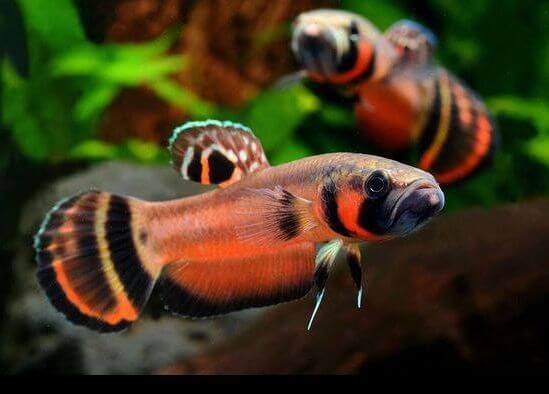
If fish are not eating well or just acting different most hobbyists pick up on it quite rapidly. There are several reasons for “not eating”.
Cichlids such as Oscars are prone to stop eating seemingly just for spite. They can go for weeks without eating, then start eating again with gusto, apparently perfectly healthy. They often do this if their food is switched.
Fish are like humans in that if they get a disease, ANY disease, they will often stop eating. For instance, gill flukes can cause a fish to stop eating. This is where the majority of the problems will lie. If there are clear symptoms you can treat the symptoms. For instance, if a fish has something like swollen red gills then one can treat for both gill flukes (praziquantel) and bacterial gill disease (antibiotic) with either pipetting or bath treatment.
If there are no other indicators of disease things can get pretty dicey and you are left with only a shot gun approach with Epsom salts, metroplex, dewormer and antibiotic. If the fish are not eating you have to administer with with a pipette or a shallow bath treatment.
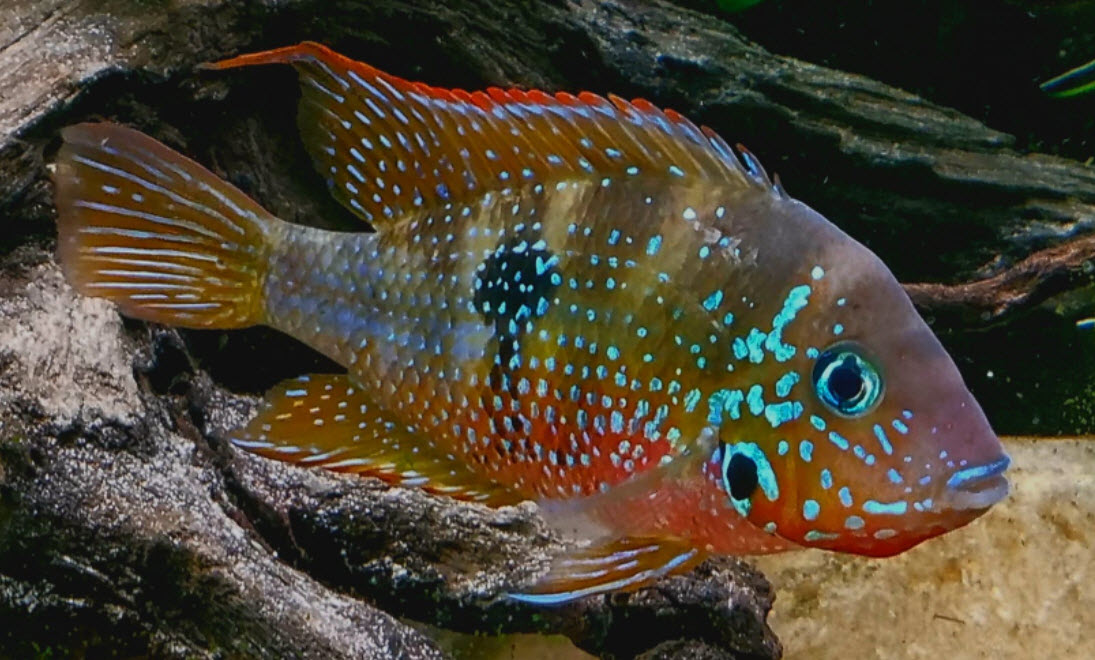
Then there is where a disease has caused a blockage of the intestines. Generally such fish will be bloated. This is a whole different ballgame. Fish with intestinal blockages are, unfortunately, very difficult to treat, and most often will die even with the most aggressive treatments. You are left with only a shot gun approach with Epsom salts, metroplex, dewormer and antibiotic. If the fish are not eating you have to administer with with a pipette or a shallow bath treatment.
Necropsies on fish which have died with “no eating” or “food spitting” show the following incidence:
- 40% have any one of a dozen or so diseases of fish which indirectly cause the fish to stop eating.
- 10% have “hexamita” (treat with metronidazole and Epsom salts)
- 10% have capillaria (treat with Fenbendazole or Levamisole)
- 10% have bacterial infections (treat with antibiotic)
- 10% have environmental mycobacteriosis (add lots of filtration)
- 20% have no apparent pathogen
Other symptoms such as hollow belly and bloat also have this “multifactorial etiology” and, like “not eating”, need to be treated with what is basically a shotgun approach with multiple medications.
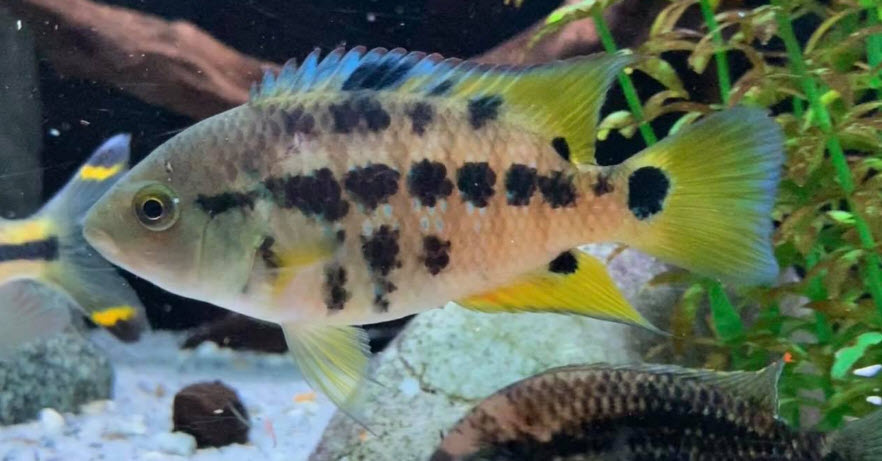
Treatment
If the fish is just “off” or acting funny but still eating a little the fish should be isolated in a bare bottom hospital tank and the following food added:
Make a concentrated solution of Epsom salts (magnesium sulfate) (takes time to dissolve), two tablespoons to a cup of water. Better yet buy magnesium citrate solution from your local pharmacy (it’s like Epsom salts, a laxative) and use it just as is out of the bottle.
Buy over the internet (these are only what the author uses, there are lots of options listed below):
- SeaChem MetroPlex,
- Fenbendazole or levamisole
- Maracyn 2
Then make some medicated food. Heat 1/4 cup magnesium solution (two ounces or 58 milliliters, not a lot) in the microwave. Then blend seven grams of plain animal derived gelatin (Knox gelatin, one packet) into the hot solution with vigorous stirring. Take two tablespoons of dry commercial fish food (pellets or flake) and mix it with just a little of the hot solution/ gelatin mixture. Add hot solution/gelatin until you get a paste like consistency. If it gets too watery just add more food.
Then add roughly 1/16 teaspoon (a 1% to 2% addition) of each of the medications to the mud. Mix and mash the whole mass thoroughly. Spread it out into a pancake about 1/8th inch (3 mm) thick on a plastic film or a plate. Then put in the refrigerator. If you plan on keeping it for more than two weeks put it in a small plastic bag and freeze.
Make two batches, one with the Metroplex and the antibiotic (Maracyn 2), the other with the dewormer (Fenbendazole or Levamisole). Feed the antibiotic/Metroplex once a day for ten days. Feed the dewormer once every two weeks for three months.
Note while the fish won’t eat it like they normally do, they typically will eat some if you just leave it in the tank. Note that the exact amount of medication which goes into the food is not very important. Antibiotics and dewormers can be overdosed pretty much with abandon as they are only toxic in large doses over a period of months.
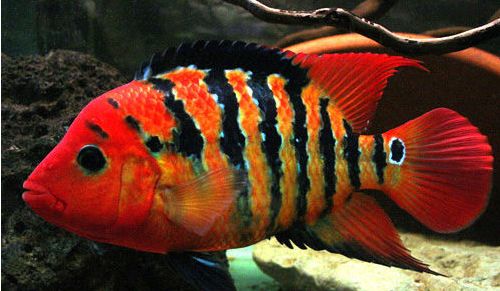
The treatment for “not eating” and/or “food spitting” has some options:
- metronidazole, alias metro’ options include API General Cure, SeaChem MetroPlex simply mixed into the food, or Hikari Metro Plus food or New Life Spectrum Hex-Shield food
- Fenbendazole (Safeguard for dogs, and several livestock dewormers) can be replaced with Levamisole (Amazon, subaquaria .com and Valleyvet .com, Agrilabs Prohibit Soluble Drench Powder and DURVET Levamed Soluble Drench Powder Dewormer). Other medications supposedly effective against roundworms are Pyrantel Pamoate, Flubendazole (Kusuri Wormer Plus) and Piperazine.
- There are several effective broad spectrum antibiotics, including Midland Vet Service Aqua-Mox, VetDepot Amoxicillin, Fishbiotic Ampicillin, Seachem Kanaplex, Mardel Maracyn 2. Left over human antibiotics can also be used.
Note the directions with most aquarium medications tell one to put large amounts of the medication into the aquarium’s water. This is a huge profit driven scam perpetuated by suppliers of aquarium medications. Fish don’t drink! And they also don’t absorb medications through their skin or gills. This controversial topic is covered in this link:
12.5. Fish Don’t Drink
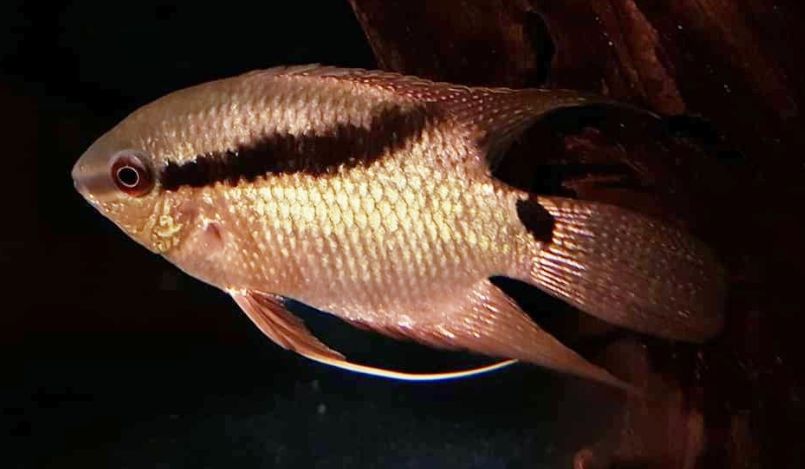
Giving Medication by Pipetting
If the fish stop eating altogether things get a little dicey. If fish haven’t eaten in a week one can do the following:
- Make up a solution of one fourth teaspoon each of Metroplex, Fenbendazole (or levamisole) and Maracyn 2 in four tablespoons of magnesium solution (two tablespoons Epsom salts per cup of water).
- Enlist the help of another person
- Net the fish out of the tank one by one into a wet towel.
- With the other person holding the fish pry open the mouth of the fish with a plastic 1 milliliter pipette filled with the medicine solution.
- Put the tip of the pipette deep into the throat of the fish and squirt some of the medicine solution into the fish. A large fish might take a milliliter while a small fish might only take a tenth of that,
- Release back into the tank
- Do this once a day till the fish starts eating
This is a drastic solution many are uncomfortable with, but if the fish aren’t eating they will start dying, not because of starvation but because of the pathogen inside them.
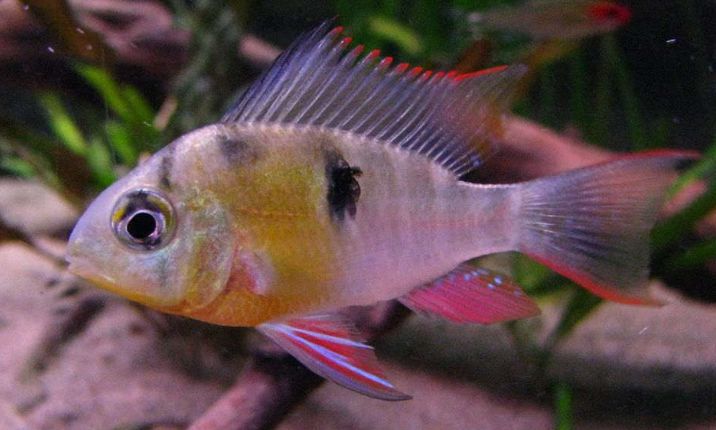
The Shallow Bath Method
There is one alternative to the pipetting method. Take a flat container like a cake pan and fill it with tank water to a depth of roughly half the body height of the fish (typically about one quart of water). Buy Metroplex, Thomas Labs Fish Bendazole and Maracyn 2 (or Kanaplex). Add the amount recommended for 10 gallons of water by the medication directions (if no directions just do one quarter teaspoon) and two cups of Epsom salts per quart to the shallow water and mix well. Put the fish in the resulting soup and allow it to flop around and gasp for five minutes. Do this once a day till the fish starts eating.
There is a good chance the fish will swallow significant quantities of medication during this bath routine.
This technique is based on the few studies which have shown medications to be effective “mixed into the water”. When one examines these studies one finds the researchers actually studied the fish with concentrated baths for short duration’s, not adding it to the water the fish was living in. The fish in these baths could not swim and were typically gasping and throwing themselves around. This allows some medication to go down the fish’s gullet.
Further Reading
The three big pathogens which cause not eating are covered in the following links:
10.5. Hexamita
10.12.2. Capillaria
10.3. Bacterial Diseases
The symptom of not eating is often accompanied by another symptom. These symptoms are covered separately in these articles:
11.2. White Poop
11.3. Malawi Bloat
11.4. Dropsy
11.5. Sunken Belly
.
Return to Symptoms Menu
.
Aquarium Science Website
The chapters shown below or on the right side in maroon lead to close to 400 articles on all aspects of keeping a freshwater aquarium. These articles have NO links to profit making sites and are thus unbiased in their recommendations, unlike all the for-profit sites you will find with Google. Bookmark and browse!
.

RYudis says
I tried the shallow bath method with Enroflocaxin and Metronidazole with each dose of 1250mg/1000ml for 5 minutes for my Guppy fish that didn’t want to eat, my fish started eating again but their bodies were getting thinner, some of them had died. Do you think this dose is too high?
Dave says
In reply to RYudis One cup of water equals 48 teaspoons, or 237 grams (237 milliliters) of water. And I don’t understand your question versus Epsom salt
Dave says
RYudis ….. One level teaspoon is very roughly five grams (5,000 milligrams) powdered salt.
RYudis says
can you give me a hint, 1/4 teaspoon is about how many grams or mg? I have a scale that reads mg, and 1 liter is too much for me who only keeps small fish like Guppy. so I need 250ml of water for a shallow bath.
RYudis says
Hi Dave, I’m from Indonesia, I’m confused about what 2 cups means? Is 2 cups for drinking, is that much? Or how many grams or milligrams for 1 liter? And can I not use Epsom salt because there is already Metronidazole?
Michael says
Specifically, I’m not sure what you mean by:
“four tablespoons of magnesium solution (two tablespoons Epsom salts per cup of water).”
Furthermore, how much do I dose the fish with.
Michael says
Hi Dave, thank you for the response. I’m treating a 15cm Discus which stopped eating. Outside, the fish looks fine but I can tell it’s sick.
I’m thinking to use the pipette method. Can you please clarify the measurements I would need for just 1 fish.
Dave says
This is for treating several fish several times over a period of time. If it is too much just reduce the amount in proportion.
Michael says
Hi Dave, can you explain this a bit more clearly in metric units? “Make up a solution of one fourth teaspoon each of Metroplex, Fenbendazole (or levamisole) and Maracyn 2 in four tablespoons of magnesium solution (two tablespoons Epsom salts per cup of water).”
As it is written, I’m assuming the recipe is:
Metroplex: 1.25 ml (1/4 teaspoon)
Fenbendazole (or levamisole): 1.25 ml (1/4 teaspoon)
Maracyn 2: 1.25 ml (1/4 teaspoon)
Magnesium solution: 60 ml (4 tablespoons)
Epsom salts: 30 ml (2 tablespoons)
Water: 240 ml (1 cup)
It seems like a lot is used just for 1mL of medication for a fish?
Dave says
In reply to Aden …. No ideas. Sorry. It could be any of many different possibilities. You can try the shotgun approach in this article.
Aden N says
I’ve been treating my paradise fish for what I assume is a bacterial infection, using kanamycin and erythromycin. After a fight with another male in the tank, his infection has been clearing up, but he seems to have lost his appetite and has been hiding in the quarantine tank. I’m unsure if it’s due to the stressful move of being placed in the quarantine tank or if the antibiotics are causing him to lose his appetite. I suspect both medications I’m using may be harsh on the fish’s body, or perhaps it’s a parasite that has taken hold of him due to his weakened immune system.